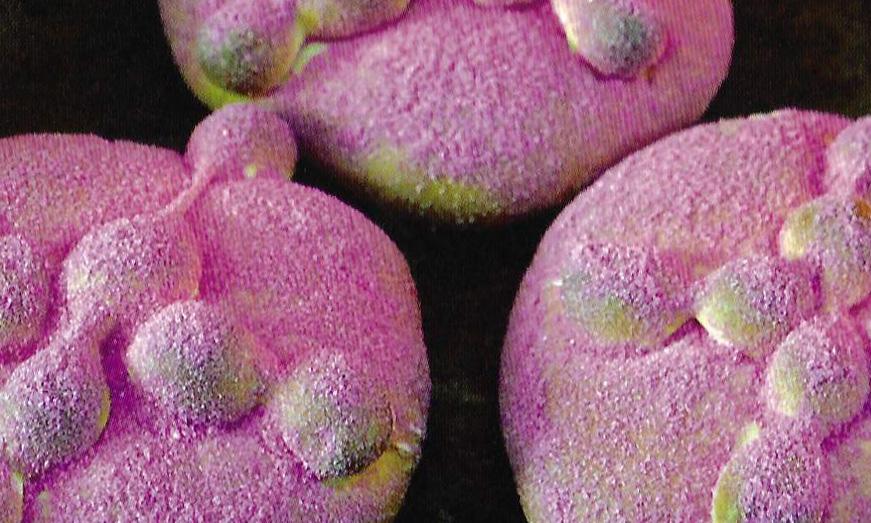
4 minute read
Day of the Dead Across Lands and Peoples
Mary J Andrade
Altar. Offering of the Millenium of Mexico City Mexico City, México “Day of the Dead in Mexico: Through the Eyes of the Soul: Mexico City, Mixquic & Morelos” 1996.
Advertisement
Mexico City
Small, ancient towns that preserved their indigenous traditions predominantly had rituals for Día de los Muertos. In recent years, the City has strived to keep the traditions of the people alive, which are usually passed down from family members. In modern urban centers like Mexico City, skeletons and sugar skulls, which are pre-Columbian representations of the spirits of the dead, are combined with a repertoire of figures taken from popular culture.
Mary J. Andrade
Zapotec altar with traditional Biquie’ Altar Tehuantepec, Oaxaca “Through the Eyes of the Soul, Day of the Dead in Mexico: Oaxaca” 1996.

Oaxaca
The state of Oaxaca is located in the southwestern part of the Mexican Republic.There,communities begin to make altars in the home and community on October 31 and finish on November 2. To the Tehuanos, indigenous descendents of the Zapotecs, death is not a reason for mourning. Many people in this region hold fast to the Zapotec tradition of having the biquie in place of the pyramidal altar. The biquie is an offering or cross made of flowers and fruit that is decorated with pan de muerto.
Puebla City, Mexico
The capital city of Puebla is 75 miles from Mexico City. Cholula located four miles away from Puebla, is home to the largest pre-Columbian monument in Mexico. In Puebla, however, Día de los Muertos has been greatly influenced by Catholicism. Tall altars with white cloth and pillars are constructed here, duplicating the design for memorials erected during the Eucharist in Baroque Catholic churches.

Mary J Andrade
Monumental Altars Huaquechula, Puebla “Day of the Dead in Mexico, Through the Eyes of the Soul: Puebla, Tlaxcala, San Luis Potosi, Hidalgo” 2001.
Mary J Andrade
Altar los Arcos, Huasteca Potosina San Luis Potosí, México “Day of the Dead in Mexico, Through the Eyes of the Soul”

San Luis Potosí, Mexico
The Xantolo celebration is considered to be a sacred time that allows individuals to keep one of the most beautiful traditions alive. It represents the communion between human beings and nature, and between one and God. It is the link that joins one to their ancestors and projects them as a link between the present and future generations. The Huasteca is traversed by many rivers and very high mountains and contains part of the Sierra Oriental coastal plains of the Gulf. The region covers the southern part of the state of Tamaulipas, the extreme northern part of Puebla, and eastern part of the state of San Luis Potosi.
Santa Fe de la Laguna, Michoacan
In the Santa Fe de la Laguna cemetery the vigils are enhanced with rose and violet tones of the sunset. Families gather to remember their loved ones. In this cemetery, offerings in honor of the children are more prominent than offerings in honor of adults. The offerings for children are represented by small chapels of tiny altars called “Amazon.” The structure is made out of wood with colored paper. Parents leave different kinds of fruit on the altars, while the Godparents leave pan de muerto.

Mary J. Andrade
Altar and offerings in memory of the priest Jose de Jesus Martinez in Santa Fe de la Laguna Altar Santa Fe de la Laguna, Michoacán “Day of the Dead: A Passion for Life” 2006.
Mayan Altar during Celebration of Hanal Pixan

Meditation in front of a Mayan altar
The Mayans celebrate the Day of the Dead, translated as Hanal Pixan, which means food, nourishment for the souls and spirits.
The Mayans said: “We came into the world to learn as apprentices of life.” People fear death because they do not understand it. They maintained that in order to die, one must learn to live; to be born, the seed must fall and die. This concept is corroborated in the adage:
In dying, the power of death is annihilated for all
eternity. They were not referring only to physical death, but to death in a mystical sense, with the transformation of the ego, of sin, of the dark part we carry inside. For the Mayans, it was critical to transform negative feelings, where at last, death becomes authentic. For it was death to the ego, to the “I” that held transformation. The altar is the center that consolidates an inspired memory: signs from one’s self; embroidery and food that adorn the abyss to honor the custom of the deceased soul.
The altar is the finished table and shares Mayan, Christian, and Aztec imagery in common syncretism of an ancestral afterlife that offers to death the dream of life.
Mary J. Andrade
Style of altar in the celebration of Hanal Pixan Altar Mérida, Yucatán “Day of the Dead in Mexico, Through the Eyes of the Soul: Yucatan” 2003. Page 65








